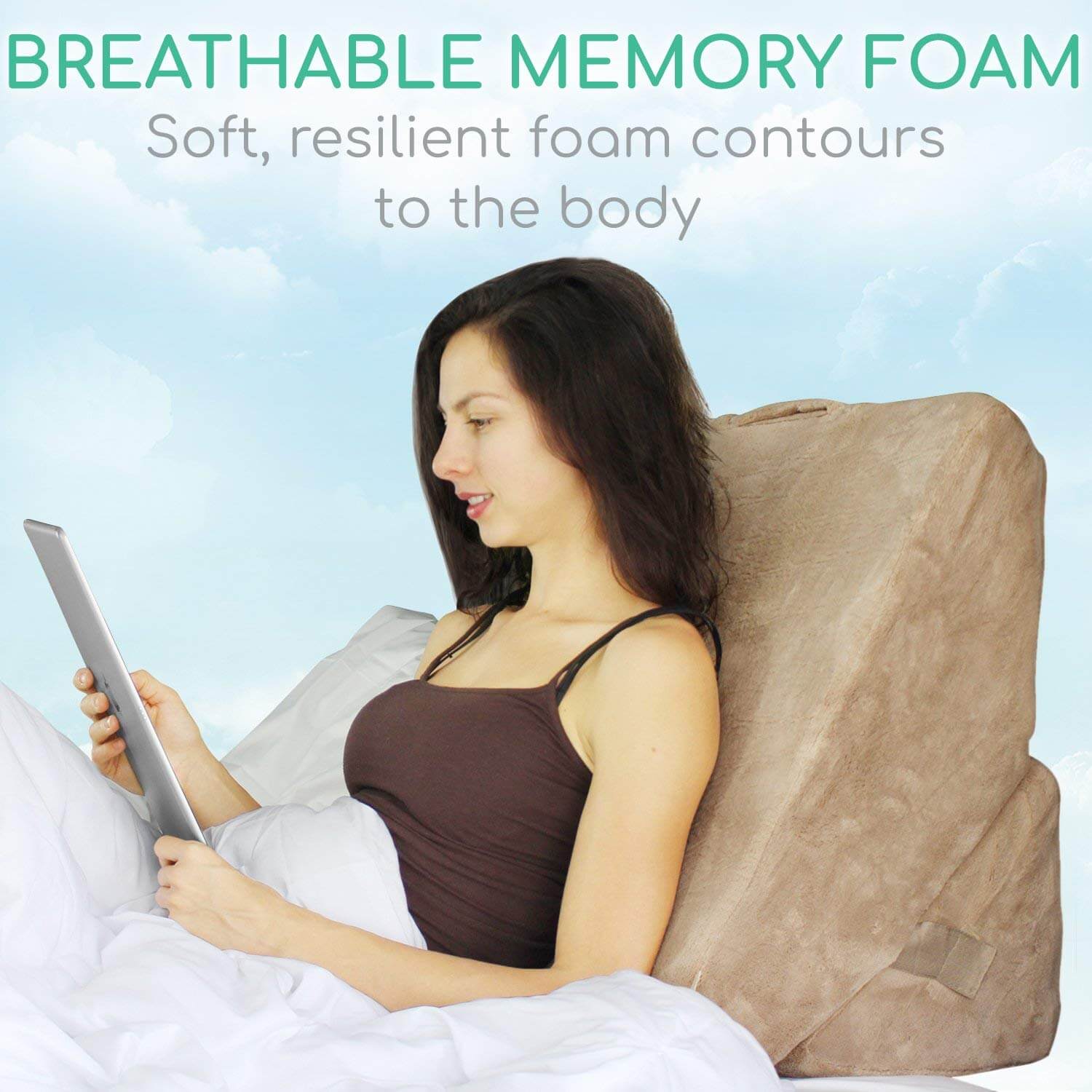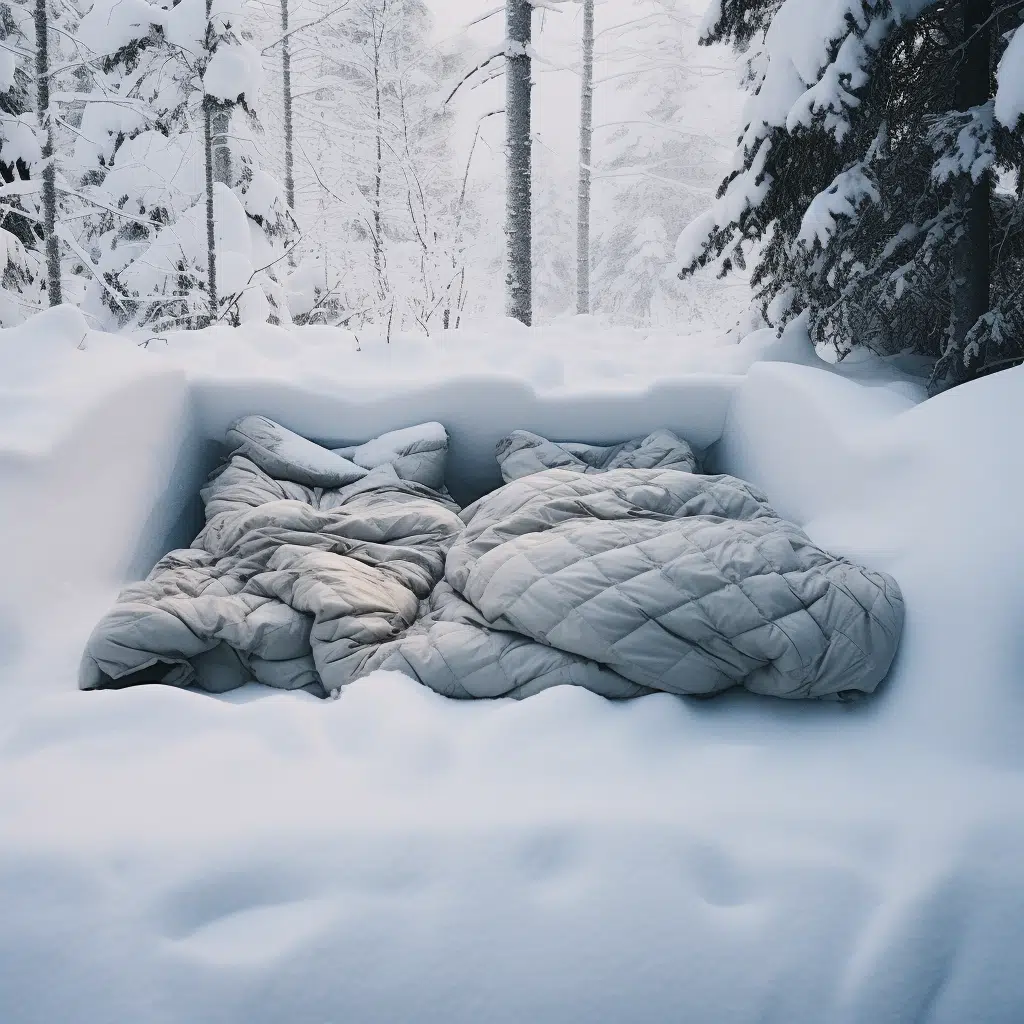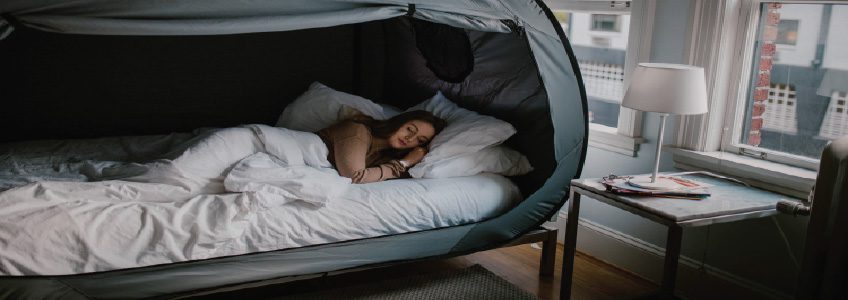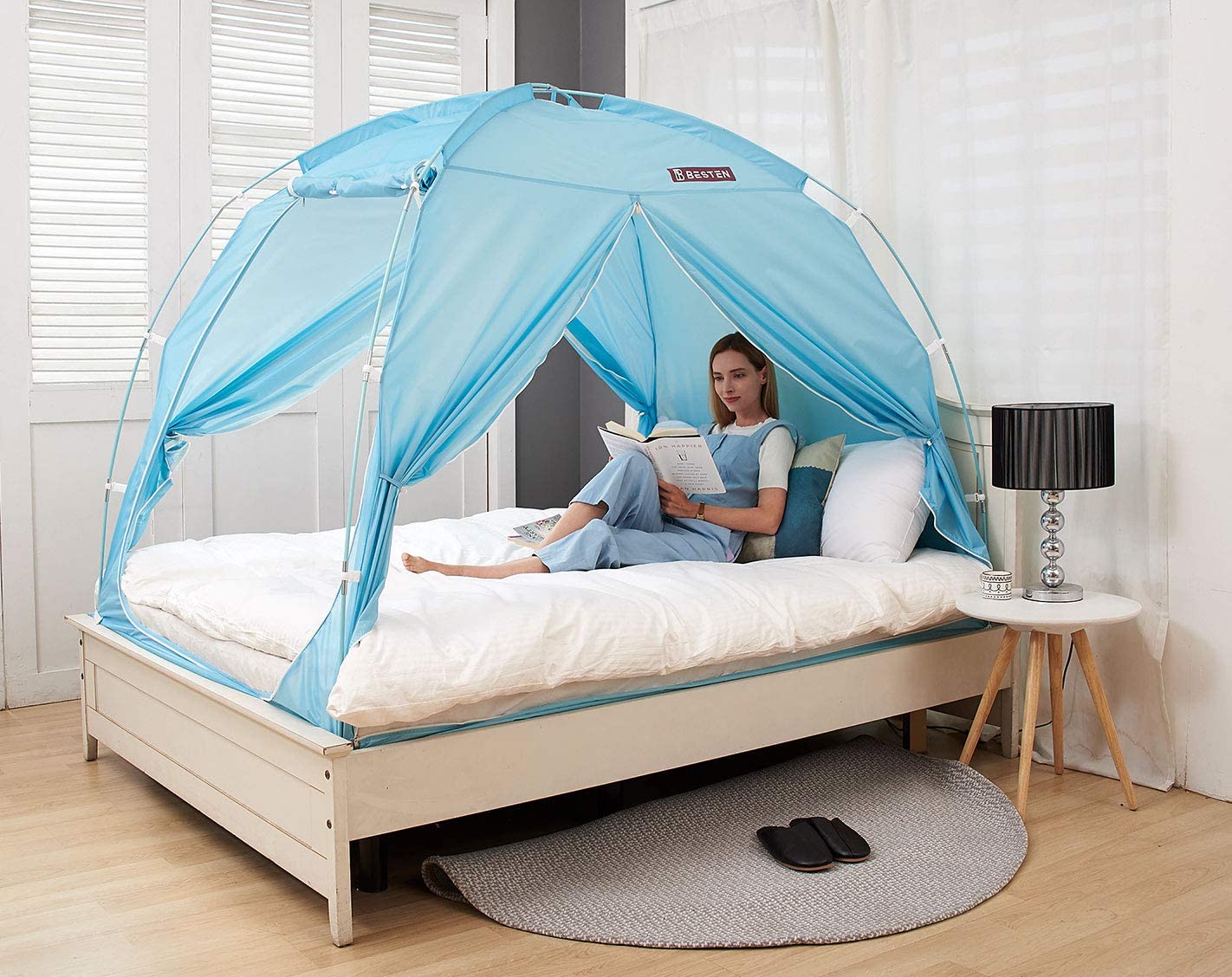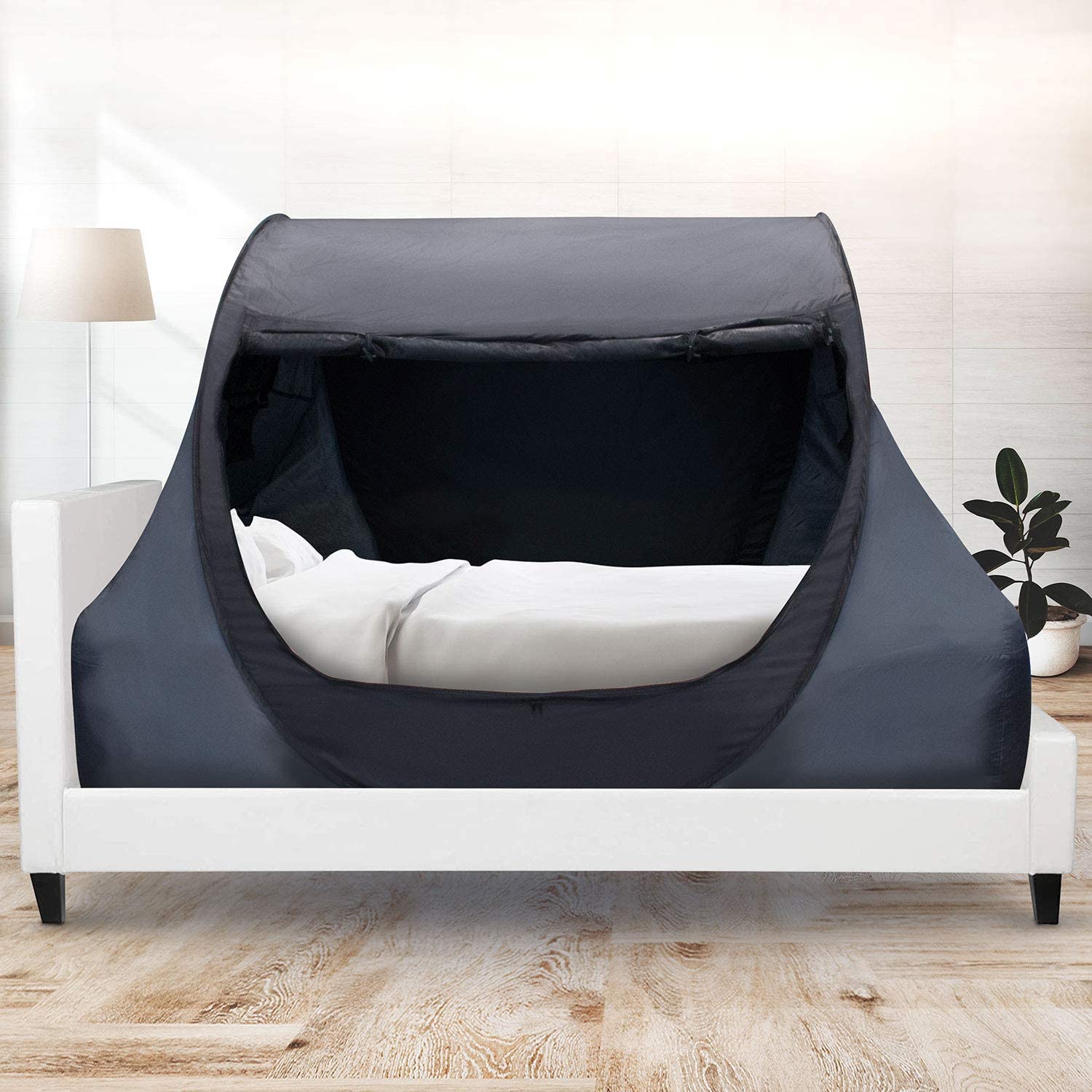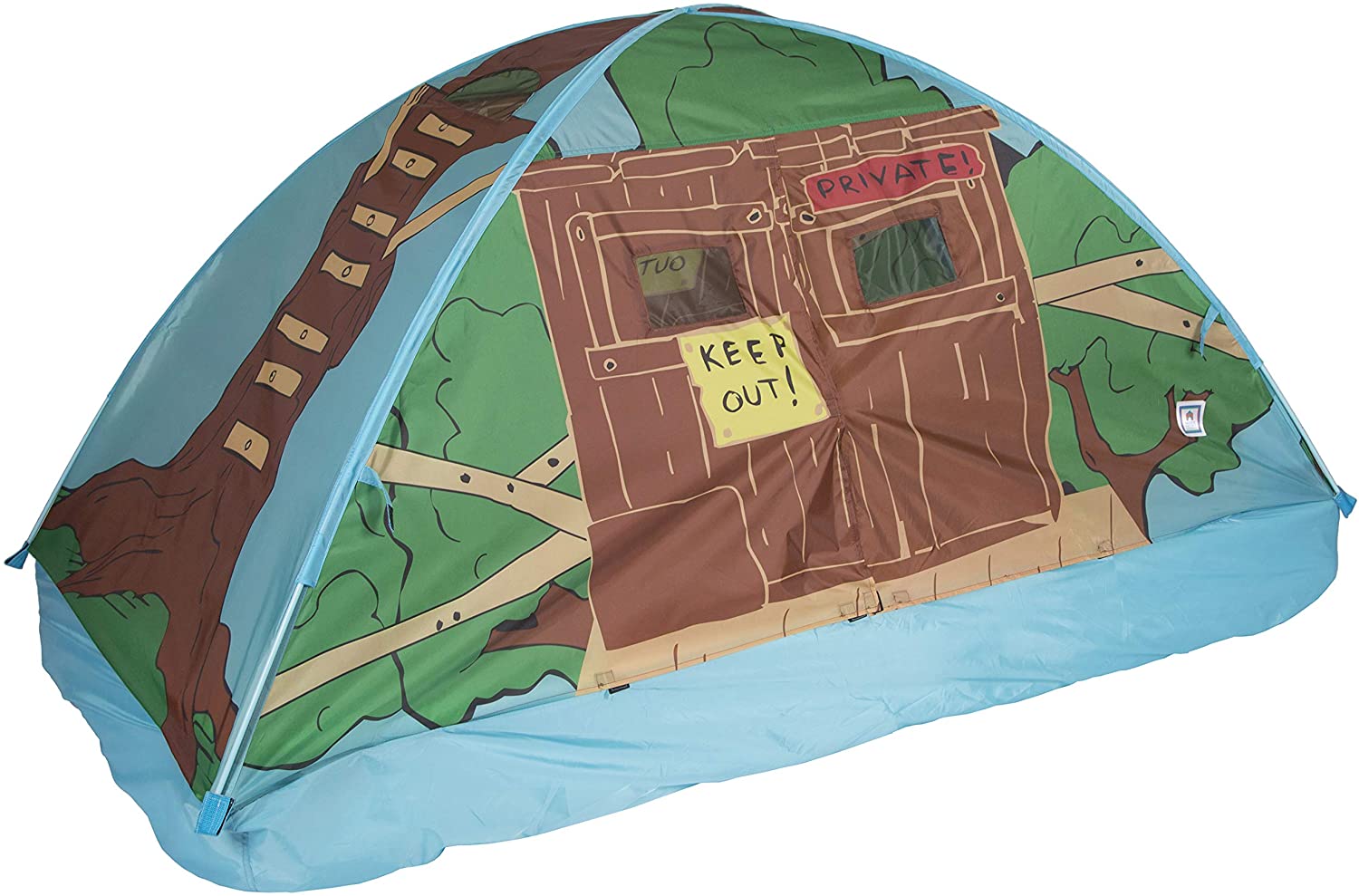It’s your best friend’s birthday, and you finally head to the new Italian restaurant you have been eyeing for a long time. You dine with mindless abandon– from garlic pasta, spicy sausage, and homemade tomato sauce to tons of wine. When you return home fully sated, you have only one thing on your mind– long, deep, restful sleep. But the moment you lie in bed, it hits you like a train. What? Acid reflux.
We have been in such a situation many, many times, when we have gobbled down food and washed down alcohol like there’s no tomorrow, only to stay awake all night with a tummy ache, discomfort, and heartburn. Acid reflux is extremely common, mostly because of our eating habits. Of course, there are people with weak digestive systems who are more prone to acid reflux, but it almost always happens because of the things we eat or drink.
Among the many reasons that can disrupt sleep at night, there is acid reflux. Anyone who has ever experienced acid reflux will be acutely aware of how difficult it makes sleep. You keep tossing and turning, drinking water, pacing up and down the room, downing digestives in hopes of making it better, but it isn’t easy to get rid of. The result is that the next morning you aren’t just sleepy, but also not feeling your best. All because of the birthday dinner that you so enjoyed.
Acid reflux can be prevented, but there are times it happens suddenly. Don’t be surprised if you get acidity even without eating a heavy Italian meal for dinner. There are various reasons why acid reflux happens, but no matter why it happens, it always makes falling asleep an impossible task.
Because acid reflux is so common, a number of manufacturers have come up with a special pillow that are supposed to help with acid reflux symptoms and make it easier to fall asleep. With normal pillows, you keep stacking then but don’t get the support that you need to ease the heartburn. That’s why these special pillows are intended to help you sleep even when you have acid reflux symptoms.
What Is Acid Reflux?
Before we discuss the pillows made for acid reflux, let’s first discuss what acid reflux is and why it happens. Although we know it by many names – acidity, indigestion, dyspepsia – it’s the same thing – gastroesophageal reflux disease (GERD).
The condition is characterized by a burning sensation and discomfort located in the throat, chest or stomach. Sometimes it also leaves a sour taste in the mouth, besides nausea, bloating, flatulence and belching. With all these symptoms it’s no wonder that acid reflux makes it difficult to fall asleep.
What Exactly Is the Cause of Acid Reflux?
Acid reflux is caused by a hiatal hernia, in which a part of the stomach pushes up towards the chest. This is the cause of acid reflux when the stomach and lower esophageal sphincter push above the diaphragm. The diaphragm muscle is responsible for helping keep acid in our stomach. When a part of the stomach pushes up, and above the diaphragm, the acid moves up into the esophagus. The diaphragm muscles are supposed to be taut, keeping the opening leading from the stomach to the esophagus closed. During eating or drinking, these muscles relax to allow the food to pass to the stomach, then tighten again. In people with GERD, the diaphragm muscles are weak and don’t relax when they should. This prevents the esophageal muscles from closing completely and allows stomach contents to push back up the throat. This is what causes indigestion, bloating, heartburn, and discomfort.
Acid reflux is more common than any other condition. About 60 percent of the American population experiences acid reflux every year, with more than half of them getting weekly symptoms. Acid reflux clearly needs more attention than just popping digestive supplements.
There are several factors that cause acid reflux. Some of the most factors are:
- Eating too close to bedtime
- Consuming acid triggering foods, such as alcohol, spicy or fatty foods, and caffeine
- Smoking
- Obesity
- Wearing tight clothing to bed
As we realize, most of the factors that cause acid reflux are manageable. But since acid reflux mostly happens at night during bedtime, it affects sleep more than anything else. This is why the things we consume close to bedtime have a maximum effect on our digestive system.
Do Wedge Pillows Work for Acid Reflux?
There are quite a few treatments and prevention options for acid reflux. Taking antacids, prescription medications, and surgery are some of the means for those who experience regular acid reflux symptoms. However, none offer any immediate improvement and have side effects. Popping an antacid when you have acid reflux during bedtime can offer relief, but it takes a few hours to work. So until then, you have to keep tossing and turning or pacing around your room.
There is, however, a quick and easy relief option when you experience acid reflux at night, and that is by elevating the upper portion of your body while you are lying down in bed. The elevation is proven to be one of the quickest solutions for acid reflux because it prevents stomach contents from coming up to the throat through the esophagus. Several studies have found the usefulness of elevating your head or the upper portion of your body to get immediate relief from acid reflux symptoms.
There are quite a few ways to elevate your head while you lay down, including stacking up the pillows and elevating the head of the bed. However, suppose you elevate your head simply by stacking a few pillows. In that case, you are creating excessive strain on your neck and spine, as well as creating pressure on your abdomen and aggravating acid reflux symptoms. Unfortunately, that is the way most people are used to elevating their head, but it isn’t of much use.
This is when you should use wedge pillows that have been specially designed to keep the head elevated while supporting the rest of the body. While wedge pillows have several different uses, they are mostly used for elevating certain body parts, such as the head, the shoulders, the back, or the legs. As the name suggests, these pillows are shaped like a wedge and are a little firmer than regular ones, allowing them to provide better support. Wedge pillows are also used for elevating the head for people who snore or have sleep apnea or need support during pregnancy.
Wedge pillows are a simple, affordable, and risk-free solution to treat nighttime GERD quickly. It won’t make your symptoms disappear, but it will make sleeping at night much easier. It is also far safer than popping pills or undergoing surgery. Wedge pillows are available online and at major bedding stores.
5 Best Wedge Pillows for Acid Reflux?
Wedge pillows are primarily manufactured for acid reflux relief. They are rising in popularity, and various manufacturers have started bringing out their own wedge pillow versions. But remember that there is a difference between ordinary wedge pillows and those specifically designed for acid reflux relief. Various cheap alternatives to wedge pillows are available, but they cannot provide the support that therapeutic pillows do. That is why, when purchasing a wedge pillow, ensure it is meant for therapeutic use.
Here we look at the top 5 wedge pillows capable of providing elevation and support.
MedCline Wedge and Body Pillow Reflux Relief System
The MedCline Reflux Relief System was created by Dr. Carl Melcher, a life-long sufferer of acid reflux. Dr. Melcher aimed to create a natural treatment alternative to nighttime reflux by creating the recommended incline + left-side sleeping position. This three-component sleep system has been studied extensively by the Cleveland Clinic in multiple clinical trials showing significantly more relief than a standard bed wedge.
The Sleep System is designed to keep sleepers on the left side throughout the night while keeping the torso elevated. This is one of those systems that prevent the sleeper from sliding down from the wedge pillow while providing support to the entire body with the help of the body pillow.
The tri-component system has a patented design to create an elevated and side sleeping position for relief from acid reflux. The system can also be used for snoring and sleep apnea. Because you aren’t going to slide down this pillow, you remain in the right position all night long and get maximum relief.
If you aren’t naturally a side sleeper, then the patented arm pocket of the Reflux Relief Wedge not only prevents you from sliding down the pillow but also prevents any pressure on your arms and shoulders. The body pillow prevents you from rolling onto your back, and also allows you to keep your knees tucked to take the pressure off the lower back. The pillowcases are included and can also be washed.
FitPlus Premium Wedge Pillow
If you are interested in a doctor-recommended wedge pillow for acid reflux, snoring, sleep apnea, and CPAP devices, then consider FitPlus Premium. This pillow has an underlying polyurethane foam wedge with a 1.5-inch layer of memory foam on top to provide you with comfort and support. The pillow has been designed in such a way that it keeps your torso elevated and supported throughout the night in case of acid reflux, congestion, snoring, sleep apnea, and any other condition that requires elevation. The pillow has a gentle elevation meant to provide cervical alignment and support to the torso while providing an inclination of 7.5 inches.
Aside from relief with sleep apnea acid reflux and congestion, this wedge pillow can also be used for elevation doing the reading, watching television and working. It has a soft cover that is washable and easy to maintain. You may also use this pillow for leg elevation or for inclining any part of the body. Design for both back and side sleepers, the highlight of this pillow is the cushioning that the memory foam layer provides. However, some customers have complained that the pillow is too high and a little too firm to be comfortable.
Medslant Acid Reflux Wedge Pillow
A common complaint about wedge pillows is that they are too small or too narrow and do not offer enough room the spread or move about without sliding off. Most wedge pillows are the same size as a regular pillow designed only for the head and neck. However, wedge pillows are also meant to support and incline the torso, which isn’t possible if the size of the pillow is small. Even if a small wedge pillow is capable of providing the sleeper with enough inclination and support, it’s easy to slide off during the night because there is not enough room to move about.
This is where the MedSlant Wedge Pillow is a winner. Not only is this pillow longer than usual but is also 28 inches wide which is half the size of a queen bed. Although this pillow elevates the torso up to 7 inches, the gradual slope does not make the incline too steep. Whether you are a back sleeper side sleeper or a combination sleeper who likes to move about during the night, this wedge pillow fits a number of different requirements. Made from a soy, polyurethane foam, it has a cushion of memory foam but also with a firm foundation layer underneath, with zero off-gassing. The zippered cover made of microfiber is easy to take off and wash and allows more breathability and airflow to keep you cool in any season. The size of this pillow offers you to adjust your sleeping position better, and also makes this a more suitable option for all kinds of sleepers.
Bed Wedge Pillow by Xtra-Comfort
If the size of the pillow is important to you, then another great option is the wedge pillow by Xtra Comfort. What makes this pillow stand apart from the rest is the incredible 12 inches of elevation. Yes, the adjustable loft of this pillow can be increased up to 12 inches, so you can remain supported and inclined for a number of different purposes, from sleeping to reading to working. Besides the torso, the legs can also be elevated using this pillow, and the high elevation is useful if you have a fracture or sprain.
This folding pillow is made from dense memory foam, has a firmer feel than most other wedge pillows, and also offers more control because of the 3 in 1 design. The clever design of the pillow makes it useful for both the back and the rest of the body. The soft, microplush cover can be removed for washing, and the zipper keeps it snug and secure. There is also a handle on the cover, which can also be used for easy storage and portability. Because the pillow is large, the handle is useful. However, some users have said that the pillow is a little too firm and takes a little time to get used to.
Xtreme Comforts 7″ Memory Foam Bed Wedge Pillow
The Xtreme Comforts Memory Foam Bed Wedge Pillow is made by layering two solid wedges, which make the sleeping surface soft and comfortable while accommodating both side and back sleepers. The sleeping position offered by this pillow not only allows the head and the neck to sink into the surface for better support and spinal alignment but also keeps the body inclined at a 30-degree angle. This helps reduce symptoms of acid reflux, sleep apnea and snoring.
The pillow has a plush bamboo cover that facilitates excellent airflow and provides maximum comfort to the sleeper. The pillow can be used to support other parts of the body, such as the back, the legs, and the knees. However, even though the pillow is mostly a great product for back and side sleepers who suffer from acid reflux, some users have complained about off-gassing and the pillow being too firm.
How to Sleep If You Have Acid Reflux?
Because acid reflux is more common than many other conditions, it is one of the biggest causes behind disrupted sleep. Acid reflux can happen at any time during the day but is notorious for striking at night, just when you’re trying to sleep. This happens particularly when you consume a big heavy meal close to bedtime or smoke or drink or have a natural tendency for GERD. In some people, everything they eat gives them acid reflux. And the problem compounds at night, just when you’re lying down in a supine position. In such cases, medicines are not much help, and surgery needs to be done in order to get rid of chronic acid reflux.
Acid reflux or GERD is notorious for disrupting sleep quality. The heartburn, pain, and discomfort can keep you up for several nights if the problem persists. As a result, you are weary, sleepy, tired, and unable to feel comfortable because of the dyspepsia. There are actually people who go through this very frequently but don’t know what to do about it. Sleep position can have a vital role to play in managing nighttime acid reflux.
As several studies have already found, elevation is the key to battling nighttime GERD. The point is to prevent the stomach from sending its contents to the throat through the esophagus. When you keep your torso elevated, the stomach acids are unable to come up towards the throat.
When the acids reach the back of the throat or larynx, it prompts choking or a coughing fit, which wakes you up. You may also wake up when you get regurgitation when some amount of stomach acids come up into the mouth through the esophagus. All these aren’t pleasant things to experience when you’re trying to fall asleep.
GERD or acid reflux is also known to be a risk factor for sleep apnea, a respiratory disorder in which breathing repeatedly stops and starts through the night when the person is asleep. It is believed that the acids cause spasms in the voice box, blocking the airways and preventing air from flowing into the lungs.
What makes matters worse is the mechanisms of sleep. Just the act of being flat on your back or side increases the risk or acid reflux. When you are in an upright position, sitting or standing, the force of gravity keeps the stomach acids from rising. When you are lying flat, it’s a lot easier for the stomach acid to flow back into the esophagus.
When a person is asleep, they swallow less frequently. As a result, the regular esophageal contractions that help keep food down in the stomach are slowed. When people are asleep, they also produce less saliva, which hinders the role it plays in keeping esophageal pH levels normal after acids are refluxed.
That means you must revise your sleeping position to prevent acid reflux. We need to lay down to sleep, and that can’t be changed. But what can be done is to keep the torso elevated to prevent the stomach acids from flowing back towards the throat. And what better way to achieve this than with the help of a wedge pillow?
How High Should You Elevate Your Head?
Although elevation is key in preventing the risk of acid reflux, there are a few do’s and don’ts of inclining your torso. First and foremost, remember that keeping your body supported during sleep is more important than anything else. If you fail to keep your neck, spine, and shoulders supported while you sleep, you are going to hurt your posture, and end up with aches and pains. That’s even worse than acid reflux.
Before going out and buying a wedge pillow, remember that your torso shouldn’t be inclined any higher than six to eight inches. Yes, so that 12-inch pillow that you read about, keep the highest inclination only for the legs and stick to six to eight inches for the torso. Any higher and you have the risk of ending up with a stiff neck and sore back.
Sleeping on your back is also a risk factor for acid reflux. When you sleep on your back, the pressure created on the stomach helps drive the acids back into the esophagus. That is why you must have noticed that lying flat not only increases the discomfort but also makes you prone to regurgitation. If you’re overweight or obese, the risk is even greater. Overweight or obese people should avoid sleeping on their back to prevent instances of acid reflux.
Sleeping on the right side is also another factor that contributes to acid reflux. When you sleep on your right side, it relaxes the lower esophageal sphincter muscle, which tightens to prevent acid reflux. The loosening of these muscles increases the chances of acid reflux. Sleeping on the right side has also been found generally disruptive to sleep quality. Even if you do not suffer from acid reflux, you should practice sleeping on your left side.
In various studies, it has been found that sleeping on the left side is best for optimal sleep quality. Whether you have trouble falling asleep, suffer from constipation or are prone to snoring, sleeping on your left side can be much better for quality sleep.
How to Manage Nighttime Acid Reflux?
Nighttime GERD is most often caused by eating habits and aggravated by sleep positions. If you frequently suffer from nighttime acid reflux, try the following for relief:
Don’t Eat or Drink Too Close to Bedtime: You should stop eating and drinking at least two hours before going to bed. Also, make sure to avoid caffeine after 2 p.m. because it is also a potential cause of acid reflux at night.
Avoid Acidic Foods: Plenty of foods seem harmless but are actually acidic or cause acid reflux. The list is never-ending, from tomatoes to red wine to coffee to garlic. Make sure to avoid these foods before bedtime to reduce the chances of acid reflux.
Lose Weight: Excess weight and obesity are often triggers for nighttime acid reflux because they create pressure on the abdomen. In that case, losing weight is the best solution to prevent acid reflux.
Wear loose clothing to bed: Wearing clothing that is too tight to bed constricts the stomach and makes digestion difficult. Remember to wear loose-fitting clothing to bed to reduce acid reflux.
GERD or acid reflux may be common, but it’s also easily manageable. Make some lifestyle changes and get a wedge pillow to elevate your torso and enjoy a better sleep every night.
Using an Acid Reflux Pillow for Optimal Relief:
Here’s a guide to properly using an acid reflux pillow for maximum benefit:
Positioning:
- Angle: Most experts recommend a 30-45 degree incline, aiming for 6-8 inches of elevation at the head. This angle helps gravity keep stomach acid down.
- Placement: Position the wedge with the lower incline towards your mid-back and the higher incline supporting your head and neck. Leave 2-3 inches of space between your head and the top of the wedge.
- Sleeping posture: While the wedge elevates your upper body, side sleeping is generally considered best for acid reflux. Avoid sleeping on your stomach.
Choosing the right pillow:
- Types: Opt for a wedge pillow specifically designed for acid reflux. These often have features like cooling materials and neck support. Consider adjustable wedge pillows for fine-tuning the angle.
- Fill and firmness: Choose a material and firmness that suits your comfort and sleep style. Memory foam provides good support, while down alternative may be softer.
Additional tips:
- Start gradually: If you’re not used to sleeping elevated, introduce the wedge pillow gradually to avoid neck strain. Begin with a lower angle and increase over time.
- Combine with lifestyle changes: Alongside the pillow, practice healthy habits like avoiding trigger foods, eating smaller meals, and not eating close to bedtime.
- Consult a doctor: If your acid reflux persists despite lifestyle changes and using the pillow correctly, consult your doctor for further evaluation and treatment options.
Growing Popularity of Acid Reflux Pillows
- Rising awareness of GERD: Gastroesophageal reflux disease (GERD), a chronic form of acid reflux, affects a significant portion of the population (estimated 15-30% in the US). As awareness of GERD grows, people seek diverse management options, potentially including acid reflux pillows.
- Increased online presence: More companies offer acid reflux pillows, and searches for related terms (“acid reflux pillow”, “wedge pillow for GERD”) generate substantial results, suggesting consumer interest.
- Emerging research: While limited, some studies show positive results for wedge pillows in reducing reflux symptoms, further fueling potential interest.
Long Term Health Consequences of Acid Reflux
Chronic acid reflux, also known as Gastroesophageal Reflux Disease (GERD), can have various long-term health effects if left untreated. Here’s a breakdown of potential consequences:
Direct consequences on the esophagus:
- Esophagitis: The constant exposure to stomach acid irritates and inflames the esophageal lining, leading to discomfort, pain, and difficulty swallowing.
- Ulcers: Chronic inflammation can cause open sores (ulcers) to form in the esophagus, increasing pain and potentially bleeding.
- Strictures: Over time, scarring can develop in the esophagus, narrowing its passage and causing difficulty swallowing even solid foods.
- Barrett’s esophagus: This precancerous condition involves changes in the esophageal lining due to chronic acid exposure. While most cases don’t progress to cancer, it increases the risk significantly.
Indirect consequences on other systems:
- Respiratory problems: Acid reflux can irritate the airways, triggering asthma symptoms like coughing, wheezing, and shortness of breath.
- Dental problems: Acid erosion can damage tooth enamel, increasing cavities and sensitivity.
- Sleep disturbances: Heartburn and discomfort at night can disrupt sleep quality, leading to fatigue and daytime dysfunction.
- Nutritional deficiencies: Difficulty swallowing and discomfort can lead to reduced food intake, potentially causing deficiencies in essential nutrients.
It’s crucial to manage chronic acid reflux to prevent these complications. If you experience frequent heartburn or other symptoms, consult your doctor. Early diagnosis and proper treatment can help minimize the risk of long-term consequences.

Best Angle for Sleeping to Avoid Acid Reflux
Unfortunately, there isn’t a single “best” angle for everyone to sleep at to avoid acid reflux. However, several strategies have been shown to be effective for many people:
1. Sleeping on your left side: Studies suggest this helps keep the stomach contents below the esophagus, making it harder for acid to flow back up. This is often referred to as the “left side down, right side up” rule.
2. Elevating your upper body: Raising your head and torso while you sleep creates an incline that can also help prevent acid reflux. Aim for about 6-8 inches of elevation at the head, using pillows or a wedge pillow designed for acid reflux. Propping yourself up with just regular pillows won’t be as effective because it only elevates your head, not your entire upper body.
3. Combining both: This seems to be the most effective approach for many people. Sleeping on your left side while also elevating your upper body can maximize the benefits of both strategies.

Adjustable beds: A viable alternative to acid reflux pillows, offering some potential advantages and disadvantages:
Advantages:
- Greater adjustability: You can fine-tune the head and foot elevation to find the exact angle that provides you the most relief. This allows for more personalization compared to wedge pillows.
- Additional features: Some models offer massage functions, heat therapy, and zero-gravity settings that can further promote relaxation and comfort.
- Long-term investment: If you experience chronic acid reflux, an adjustable bed can be a more durable and potentially cost-effective solution compared to replacing wedge pillows over time.
Disadvantages:
- Cost: Adjustable beds are significantly more expensive than wedge pillows.
- Complexity: They can be more complex to set up and operate than simple wedge pillows.
- Potential downsides of adjustability: Over-adjusting or changing positions frequently might disrupt sleep.
- Not a guaranteed solution: While helpful for many, they may not completely eliminate acid reflux for everyone.
Here’s a quick comparison to help you decide:
| Feature | Acid reflux pillow | Adjustable bed |
|---|---|---|
| Price | Lower | Significantly higher |
| Adjustability | Limited (angle) | Wide range (head, foot, positions) |
| Durability | Moderate | Higher |
| Additional features | None | Massage, heat, zero-gravity |
| Setup | Simple | More complex |
| Guaranteed solution? | No | No |
Ultimately, the best choice for you depends on your individual needs, budget, and preferences. Consider the severity of your acid reflux, how well you respond to adjustments, and whether the additional features of an adjustable bed justify the cost.





